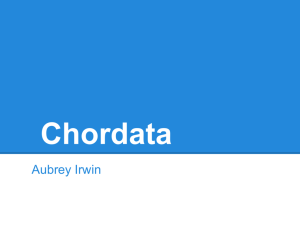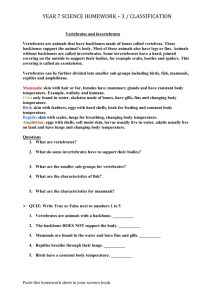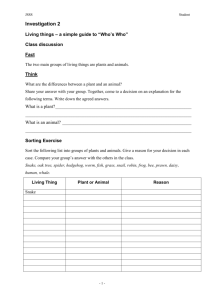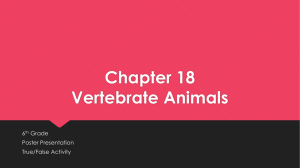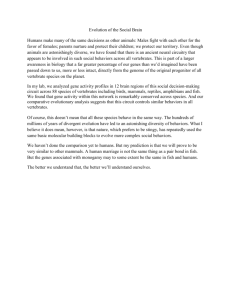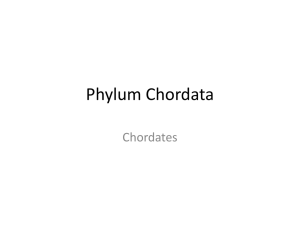1330618329vertebrate classes
advertisement
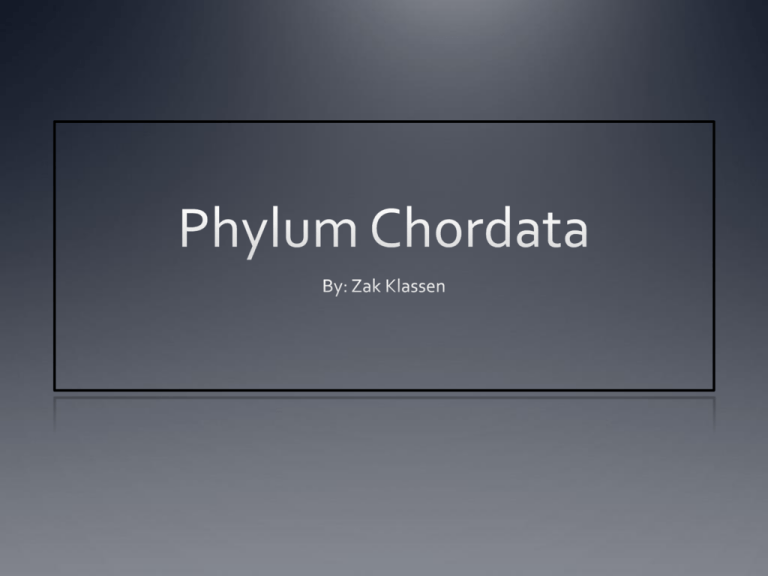
Overview The chordata phylum consists of three groups: Vertebrates, Tunicates, and Lancelets. All chordates share the same four features: Notochord- flexible skeletal support rod embedded in animal’s back Hollow nerve chord- forms section of ectoderm that rolls up during development Pharyngeal slits- water can pass through the mouth and leave through slits without going the system Tail- contains segments of muscle tissue for movement Vertebrates Large active animals with a well developed brain encased in a hard skull. Example: Fox Tunicates (Urochordates) include free-swimming and sessile invertebrates. Example: Sea squirt Lancelets (Cephalochordates) are small eel-like invertebrates commonly found in shallow tropical oceans. Able to swim, but spend most of their time buried in sand, filtering water for food particles. Example: Lancelet Agatha Oldest class of vertebrates. Jawless. Example: Lampreys Chondrichthyes Cartilaginous fish Have skeletons made of cartilage. Examples: Sharks, Rays, Chimeras Osteichthyes Bony fish. Have skeletons made of bone. Example: Ray-finned fish Amphibia First to adapt to life on water and land. Reproduce in water and moist land. Examples: Salamanders, Frogs, Toads, Caecilians Reptilia May live on land and water. Produce eggs that do not need water. Examples: Snakes, Lizards, Crocodiles, Alligators, Turtles Aves Birds. Distinguished by feathers and other features. Examples: Any bird Mammalia Animals with hair, mammary glands, and three middle ear bones. Examples: Dogs, Bats, Humans, Monkeys
